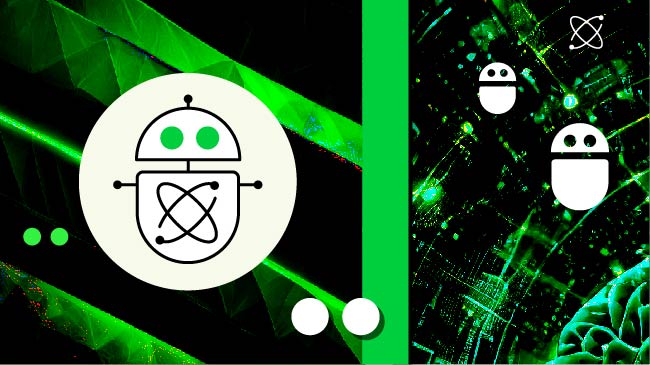Leveraging Legacy Code With AI-Powered Mainframe Modernization
Alex Burak, solutions consultant at IBA Group, explains how generative AI and other tools are changing approaches to application modernization

Legacy mainframes remain one of the most underestimated parts of the enterprise architecture of large-scale organizations. Every second, they process thousands of transactions, store data and handle operations. And there are still many businesses, including those in data-critical industries, that ignore the importance of mainframe modernization. As a result, outdated system design and technologies lead companies to high maintenance costs and make modernization seem daunting.
AI-assisted mainframe application modernization can solve this challenge. Leveraging generative AI, agentic automation and hybrid-cloud architectures, companies turn their legacy codebases into strategic business assets.
AI’s Role in Transformation
AI fundamentally changes how enterprises approach modernization. I’ve seen GenAI tools like IBM watsonx Code Assistant, GitHub Copilot for COBOL, AWS Transform for Mainframe, and Google Gemini make a difference in development cycles. These tools analyze complex COBOL code and can even generate new code components.
The most powerful concept is the combination of AI’s speed with human intelligence. While AI handles mundane tasks, developers can focus on strategic architecture design and innovation.
Resource Allocation and Operational Flexibility
AI-powered modernization makes a difference in human and technical resource allocation.
By automating significant portions of code analysis, generative AI solutions reduce the reliance on highly specialized legacy COBOL experts for routine or complex refactoring tasks. This allows organizations to reallocate their most experienced personnel to architectural design, strategic planning, quality assurance and innovation. Younger developers can also become productive on mainframe projects much faster, aided by AI tools.
AI allows organizations to adapt their core business systems quickly, whether responding to new market demands, regulatory changes or end-users’ expectations. This is where AI becomes a true business driver: It shifts mainframes from rigid, slow-moving platforms into agile engines for growth.
Case Study: Logistics Transformation
Recently, there was a case of a major logistics company undertaking a large-scale modernization of its supply chain optimization platform. Integrating GitHub Copilot for COBOL, the team transformed critical modules into a cloud-native Java environment.
The results speak for themselves:
- Modernization timelines were reduced by more than 50%, enabling the faster deployment of predictive delivery route optimization tools.
- The company gained scalability and flexibility, providing instant booking confirmations and dynamic spot-rate calculations for shipping services.
Of course, there were challenges. AI-transformed code required continuous testing. Also, we implement change management to help developers trust AI outputs. Additionally, undocumented or “spaghetti” legacy code required careful handling. It’s just a reminder that AI is powerful, but not magic.
Critical Success Factors for AI-Assisted Mainframe Application Modernization
Organizations that succeed in AI-assisted modernization share several traits:
Clear Vision
Modernization must align with concrete business goals, whether faster customer service, regulatory compliance or new product innovation.
Appropriate Toolkit
The right AI tools must match the legacy environment, modernization goals and enterprise infrastructure. Projects often fail when teams choose tools without considering their compatibility with legacy code.
Skilled Teams
Developers must be trained to validate, refine and trust AI outputs. Without this human oversight, AI’s potential is wasted.
Agile Approach
There is a common recommendation to start with high-value areas and deliver early wins, rather than attempt to reach a full-scale “big bang” modernization.
Culture of Innovation
Leadership support and a willingness to embrace experimentation are critical to overcoming resistance to change.
How to Address Legacy Challenges?
Code quality, organizational inertia and skill gaps are the main obstacles to successful modernization. To address these:
- Conduct a code review to figure out challenges.
- Implement comprehensive testing to ensure the functional equivalence of AI-transformed code.
- Manage change effectively through communication, pilot programs and involving developers in AI tool selection and fine-tuning.
- Invest in upskilling the existing staff, combining mentorship, training programs and strategic hiring to bridge AI and modern development expertise.
The Future Trends in AI-Assisted Mainframe Application Modernization
Looking forward, it appears that there are several emerging AI capabilities transforming enterprise digital transformation over the next three to five years:
- Automated AI-powered legacy data and mainframe modernization
- Deep integration of AI to intelligently re-architect applications for cloud-native performance
- AI and human collaboration across all development stages
- Ensuring ethical AI with government compliance
A Modern Necessity
AI-assisted mainframe modernization is a strategic imperative. Organizations that embrace this approach gain agility and innovation and reduce costs through long-term vision. The enterprises that succeed will combine the best of AI and human expertise, turning mainframes from perceived constraints into exceptional end-user experiences.
The question is not whether to modernize, but how quickly organizations can leverage AI to transform legacy assets into future-ready platforms that drive growth, innovation and operational excellence. The sooner leadership acts, the sooner these companies can claim leadership in the digital economy.